- Getting Started: How to Grow Asparagus from Seeds
- 1. Choose a Suitable Variety
- 2. Prepare a Suitable Growing Area
- 3. Start Seeds Indoors
- 4. Transplant Seedlings
- 5. Care for the Asparagus Plants
- 6. Harvesting Asparagus Spears
- 7. Winter Care
- Choosing the Right Varieties
- Growing Season
- Yield
- Resilience
- Flavor and Texture
- Suitability for Your Growing Conditions
- Preparing the Garden Bed
- 1. Choose a Suitable Location
- 2. Clear the Area
- 3. Test and Amend the Soil
- 4. Dig Trenches
- 5. Add Organic Matter
- 6. Plant the Seeds
- 7. Water
- Sowing the Seeds
- Providing Proper Care
- Protecting Against Pests and Diseases
- Pest control
- Disease prevention
- Integrated pest management
- Harvesting and Storing Asparagus
- Harvesting Asparagus
- Storing Asparagus
- Preserving Asparagus
- Troubleshooting Common Issues
- Poor Germination
- Poor Seedling Growth
- Pest Infestation
- Disease Problems
- Tips for Growing Asparagus Successfully
- “Question-Answer”
- What are some popular varieties of asparagus to grow in a vegetable garden?
- Can you grow asparagus from seeds?
- How long does it take for asparagus seeds to germinate?
- Do asparagus plants need a lot of space to grow?
- What are some tips for growing asparagus from seeds?
- “Video” How to grow asparagus in a bag at home | very easy for beginners
Asparagus is a nutrient-rich vegetable that is easy to grow in your own garden. In this guide, we will provide you with all the information you need to successfully grow asparagus from seeds in your vegetable garden. We will cover different varieties of asparagus, how to prepare the soil, planting and caring for the seeds, and harvesting the delicious spears.
Before we dive into the details, let’s talk about why you should consider growing asparagus in your garden. Asparagus is not only a delicious addition to your meals, but it is also packed with vitamins, minerals, and antioxidants that are beneficial for your health.
There are several varieties of asparagus to choose from, and each has its own unique characteristics. Some popular varieties include ‘Jersey Knight’, ‘Mary Washington’, and ‘Purple Passion’. Each variety has its own flavor profile and can be used in various culinary dishes.
Now that you have chosen your asparagus variety, it’s time to prepare the soil for planting. Asparagus thrives in well-drained, nutrient-rich soil. It is important to remove any weeds or debris from the area where you plan to plant your asparagus. You can also add compost or organic matter to improve the soil’s fertility.
Getting Started: How to Grow Asparagus from Seeds
Growing asparagus from seeds can be a rewarding and delicious addition to your vegetable garden. Here are some steps to help you get started:
1. Choose a Suitable Variety
There are several varieties of asparagus to choose from, each with its own unique flavor and characteristics. Some popular varieties include Mary Washington, Purple Passion, and Jersey Giant. Research the different varieties and choose one that suits your taste and growing conditions.
2. Prepare a Suitable Growing Area
Asparagus prefers well-draining soil with a pH level between 6.0 and 7.0. Choose a sunny spot in your garden with loose, fertile soil. Before planting, remove any weeds or grass and loosen the soil with a garden fork or tiller. Add organic matter to improve the soil’s fertility and drainage.
3. Start Seeds Indoors
Asparagus seeds can take a long time to germinate, so it’s best to start them indoors. Plant the seeds in flats or individual pots filled with seed-starting mix. Sow the seeds at a depth of about 1/2 inch and keep the soil moist but not waterlogged. Place the containers in a warm location with indirect sunlight.
4. Transplant Seedlings
Once the seedlings have developed a few true leaves, they are ready to be transplanted into the garden. Choose a mild day to plant them, as asparagus doesn’t tolerate frost. Dig a trench or furrow that is about 6-8 inches deep and wide enough to accommodate the roots. Space the seedlings 12-18 inches apart in the trench.
5. Care for the Asparagus Plants
After transplanting, keep the soil consistently moist, but avoid overwatering. Mulch around the plants to suppress weeds and retain moisture. As the asparagus plants grow, they will produce fern-like foliage. Avoid cutting or harvesting any spears during the first year to allow the plants to establish a strong root system.
6. Harvesting Asparagus Spears
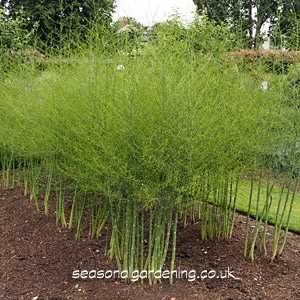
After the first year, you can start harvesting the asparagus spears. Cut the spears when they reach a length of 6-8 inches above the soil surface. Use a sharp knife or garden shears to cut the spears just below the soil line. Harvest for about 6-8 weeks, then allow the remaining spears to grow and mature into ferns.
7. Winter Care
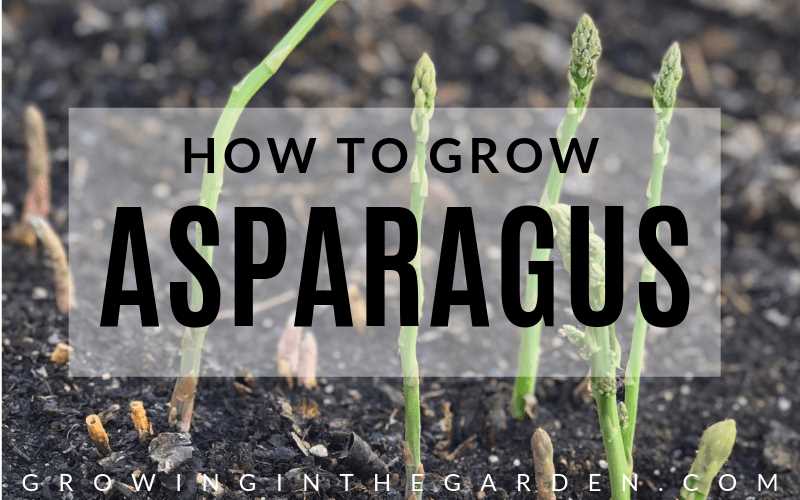
In late fall, after the foliage has turned yellow, cut it back to ground level and remove any debris from the garden. Apply a layer of compost or well-rotted manure to provide nutrients for the next growing season. Mulch the bed to protect the roots from freezing temperatures.
By following these steps, you can successfully grow asparagus from seeds and enjoy a bountiful harvest for years to come.
Choosing the Right Varieties
When it comes to growing asparagus from seeds in your vegetable garden, choosing the right varieties is crucial. Different varieties of asparagus have different characteristics and requirements, so it’s important to choose the ones that will work best for your specific needs and growing conditions. Here are some factors to consider when selecting asparagus varieties:
Growing Season
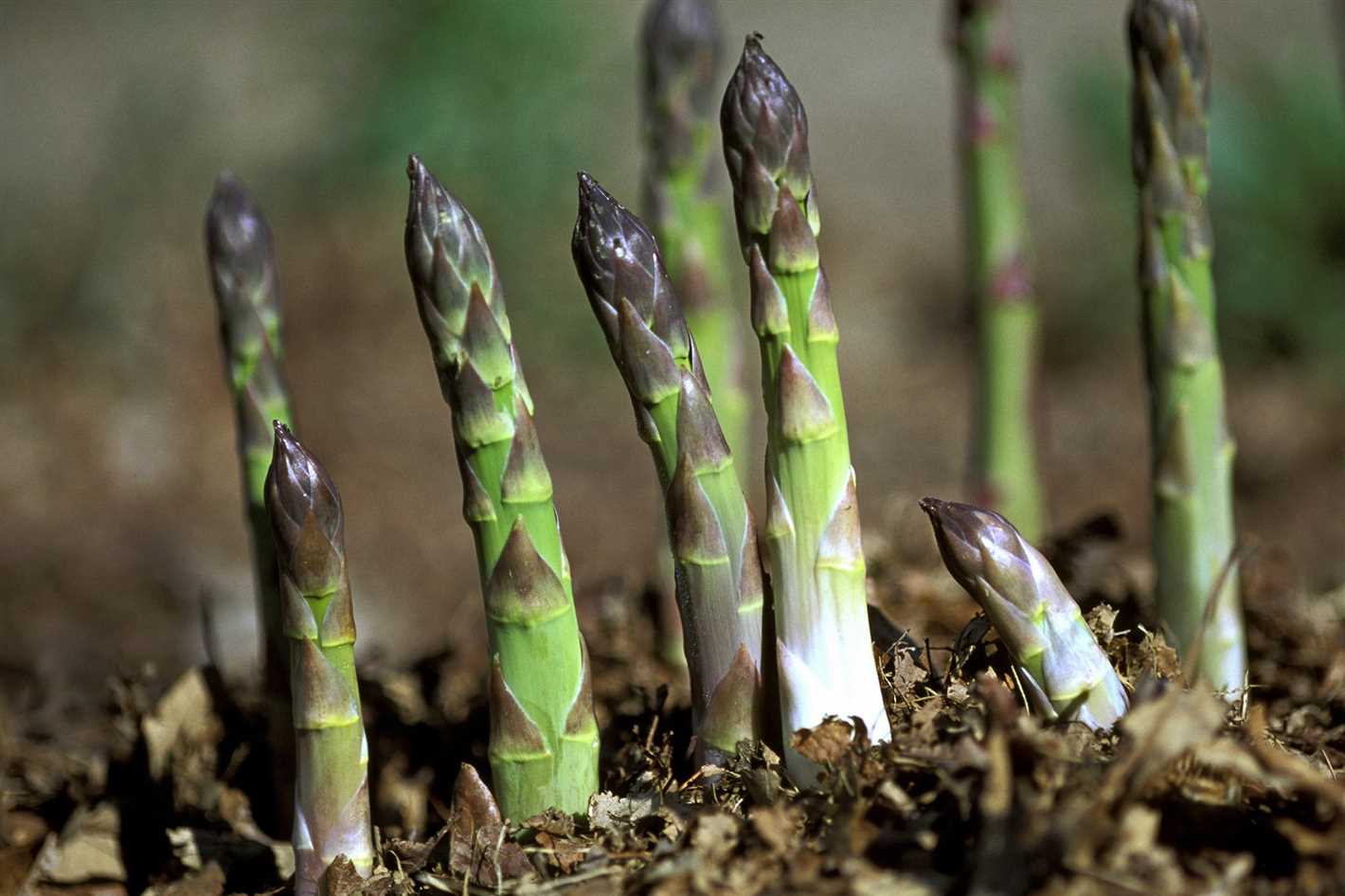
Asparagus can be classified into early, mid-season, and late varieties based on their growing season. Early varieties tend to produce spears earlier in the season, while late varieties produce spears later. You can choose a combination of early and late varieties to extend your asparagus harvest throughout the growing season.
Yield
The yield potential of asparagus varieties can vary. Some varieties may produce more spears per plant, resulting in higher overall yields. If you have limited space in your vegetable garden, you may want to choose high-yielding varieties to make the most of the available space.
Resilience
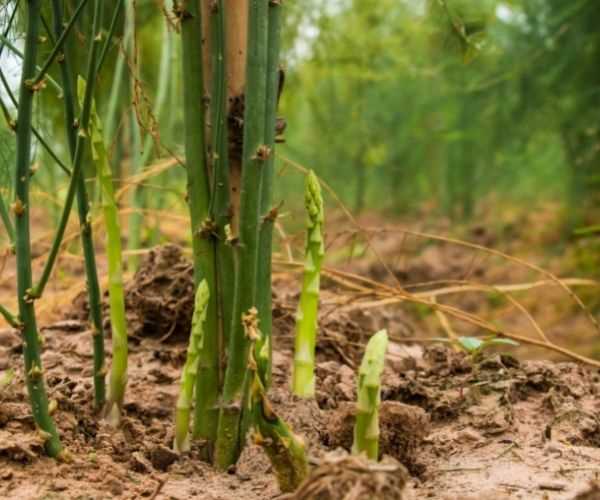
Not all asparagus varieties are equally resilient to pests, diseases, and adverse weather conditions. Some varieties may be more resistant to common pests and diseases, requiring less intervention and maintenance. Additionally, certain varieties may be more tolerant of cold temperatures or drought, making them a better choice for specific climates.
Flavor and Texture
The flavor and texture of asparagus can vary among varieties. Some varieties may have a sweeter or more robust flavor, while others may be tender or have a slightly different texture. It’s a good idea to taste test different varieties before planting them to determine your preferences.
Suitability for Your Growing Conditions
Lastly, consider the specific growing conditions in your vegetable garden. Some varieties may thrive in sandy or clay soil, while others may prefer loamy soil. Additionally, some varieties may require full sun, while others can tolerate partial shade. Choose varieties that are well-suited for your soil type and sunlight availability.
By considering these factors, you can choose the right varieties of asparagus seeds to ensure a successful and rewarding harvest in your vegetable garden.
Preparing the Garden Bed
Before planting asparagus seeds, it’s important to properly prepare the garden bed to provide the best growing environment for the plants. Follow these steps to ensure a successful asparagus patch:
1. Choose a Suitable Location
Asparagus plants require a sunny location with well-drained soil. Select a spot in your vegetable garden that receives at least 6 hours of direct sunlight each day. Make sure the area is free from weeds and is easily accessible for maintenance and harvesting.
2. Clear the Area
Remove any grass, weeds, or other plants from the chosen area. Use a garden rake or hoe to clear the surface, ensuring that all roots and debris are removed. This will provide a clean space for the asparagus seeds to grow.
3. Test and Amend the Soil
Test the soil in your garden bed to determine its pH level and nutrient content. Asparagus plants prefer a pH level between 6.5 and 7.5. If the pH level is too acidic or alkaline, you’ll need to amend the soil accordingly using lime or sulfur. Additionally, asparagus plants thrive in fertile soil, so adding compost or well-rotted manure will help provide them with the necessary nutrients.
4. Dig Trenches
Asparagus plants grow best in trenches, which allow for deeper root development. Dig a trench that is approximately 12 inches wide and 8 to 10 inches deep. Space the trenches 3 feet apart to allow enough room for the mature plants to grow.
5. Add Organic Matter
Before planting the seeds, add a layer of organic matter to the bottom of the trench. This can be compost, well-rotted manure, or a mixture of both. Spread a 2-inch layer evenly along the length of the trench. This will further enrich the soil and provide nutrients for the growing plants.
6. Plant the Seeds
Now that the garden bed is ready, carefully sow the asparagus seeds in the prepared trench. Space the seeds approximately 2 inches apart, covering them with a thin layer of soil. Gently firm the soil over the seeds to ensure good seed-to-soil contact.
7. Water
Once the seeds are planted, water the garden bed thoroughly to ensure proper hydration. The soil should be moist but not waterlogged. Water regularly to keep the soil consistently moist during the germination and early growth stages of the plants.
By following these steps to prepare the garden bed, you’ll provide a favorable environment for your asparagus seeds to germinate and grow into thriving plants. Remember to be patient, as asparagus plants take time to establish and produce a bountiful harvest.
Sowing the Seeds
Before you start sowing your asparagus seeds, you need to prepare the soil. Asparagus prefers well-drained soil with a pH between 6.5 and 7.5. It is recommended to amend the soil with compost or well-rotted manure to improve its fertility.
Once the soil is ready, you can start sowing the seeds. Asparagus seeds are small and can be sown directly into the ground or started indoors and then transplanted. If you choose to start indoors, sow the seeds in seed trays or small pots filled with seed-starting mix.
Sow the seeds about 1/2 inch deep and cover them lightly with soil. Keep the soil moist but not waterlogged. It is important to provide the seeds with sufficient warmth and moisture for germination.
After about 2-3 weeks, the seeds should start germinating. Once the seedlings have developed their first set of true leaves, they can be thinned out to give them more space to grow. Transplant them into individual pots or into the ground, spacing them about 12 inches apart.
Asparagus is a perennial plant, so it will take a few years before you can harvest the spears. However, growing asparagus from seeds allows you to choose from a wider variety of cultivars and can be a rewarding experience for any vegetable gardener.
- Prepare the soil by amending it with compost or well-rotted manure.
- Sow the seeds directly into the ground or start them indoors.
- If starting indoors, sow the seeds in seed trays or small pots filled with seed-starting mix.
- Keep the soil moist but not waterlogged for germination.
- Thin out the seedlings once they develop their first set of true leaves.
- Transplant the seedlings into individual pots or into the ground, spacing them about 12 inches apart.
Providing Proper Care
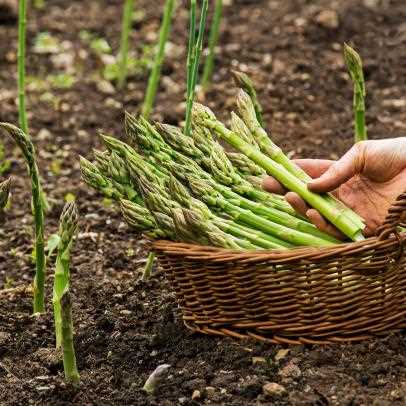
Growing asparagus from seeds requires proper care to guarantee success. Here are some essential tips to ensure your asparagus plants thrive:
- Watering: Asparagus plants need consistent moisture, especially during the first two years of growth. Keep the soil evenly moist, but not waterlogged, to prevent root rot.
- Fertilizing: Apply a balanced fertilizer, such as a 10-10-10, in early spring and mid-summer. Avoid excessive nitrogen fertilizers as they can encourage fern growth at the expense of root development.
- Weeding: Regularly remove weeds from the asparagus bed to prevent competition for nutrients and water. Be careful not to disturb the fragile roots of the asparagus plants.
- Mulching: Apply a layer of mulch, such as straw or wood chips, around the asparagus plants to suppress weeds, retain moisture, and regulate soil temperature.
- Support: As the plants grow, they may need support to prevent them from bending or breaking. Use stakes or trellises to keep the plants upright and ensure proper development.
- Harvesting: Once the asparagus spears reach around 8 inches in height, they can be harvested by cutting them just above the soil surface. Avoid overharvesting to allow the plants to develop properly.
By providing the proper care, your asparagus plants will produce delicious spears for many years to come.
Protecting Against Pests and Diseases
Asparagus is generally a low-maintenance plant, but it is not immune to pests and diseases. Taking preventive measures and being vigilant can help protect your asparagus crop from potential damage.
Pest control
Here are some common pests that can affect asparagus plants:
- Asparagus beetle: These beetles can strip the foliage of asparagus plants. Handpicking them off the plants and applying insecticidal soap can help control their population.
- Aphids: Aphids are small, soft-bodied insects that can suck the sap from asparagus plants. Spraying them with a strong jet of water or using insecticidal soap can help eliminate them.
- Slugs: Slugs feast on asparagus spears and can cause considerable damage. Removing weeds and debris from around the plants and applying slug repellent can deter them.
Disease prevention
Here are some common diseases that can affect asparagus plants:
- Fusarium wilt: This fungal disease affects the roots and crowns of asparagus plants, causing them to rot. Planting disease-resistant varieties and maintaining proper drainage can help prevent its spread.
- Rust: Rust is a fungal disease that manifests as orange-colored spots on the foliage of asparagus plants. Removing infected leaves and improving air circulation in the garden can help control its spread.
- Crown rot: Crown rot is caused by various fungi and can lead to the decay of the asparagus crown. Avoiding overwatering and overcrowding the plants can help prevent this disease.
Integrated pest management
Implementing an integrated pest management (IPM) approach can be effective in preventing and controlling pests and diseases in your asparagus garden. Here are some practices to consider:
- Regularly inspect your plants for signs of pests or diseases.
- Encourage beneficial insects, such as ladybugs and lacewings, which prey on aphids and other pests.
- Practice crop rotation to prevent the buildup of pests and diseases in the soil.
- Mulch around the plants to suppress weed growth and reduce the risk of diseases.
- Provide adequate spacing between the plants to improve air circulation and reduce the risk of fungal diseases.
- Avoid over-fertilizing, as it can attract pests and make plants more susceptible to diseases.
By following these tips and staying proactive, you can help ensure a healthy and thriving asparagus crop in your vegetable garden.
Harvesting and Storing Asparagus
Harvesting Asparagus
Asparagus can be harvested once the spears reach a height of about 6 to 8 inches. This usually happens about two years after planting the seeds. Harvesting should be done carefully to avoid damaging the plant.
- Using a sharp knife or pair of garden shears, cut the spears just below the soil surface.
- Start by harvesting only a few spears initially, allowing the remaining spears to grow and develop.
- Harvesting should be done every two to three days during the peak growing season.
- Avoid harvesting spears that are too thin or woody as they might not be of good quality.
Storing Asparagus
To keep your harvested asparagus fresh and flavorful, it’s important to store them properly. Follow these tips to ensure the best storage conditions:
- Trim or remove any tough ends from the stems.
- Store the asparagus upright in a container or a glass with about an inch of water.
- Cover the tops of the spears loosely with a plastic bag and refrigerate them.
- Alternatively, you can wrap the asparagus in a damp paper towel and store them in a plastic bag.
- Stored asparagus can last for up to a week in the refrigerator.
Preserving Asparagus
If you have a surplus of asparagus, you can also consider preserving them for later use. Here are two common methods for preserving asparagus:
| Method | Description |
|---|---|
| Freezing | Cut the asparagus into desired length and blanch them in boiling water for a few minutes. Then plunge them into ice water to stop the cooking process. Drain, dry, and pack the blanched asparagus into freezer-safe bags or containers. Frozen asparagus can last for several months. |
| Pickling | Pickling asparagus involves preserving them in a brine or vinegar solution. You can find various pickling recipes online to suit your taste preferences. Once pickled, store the asparagus in sterilized jars and keep them in a cool, dark place. Pickled asparagus can last for months. |
By harvesting and storing your asparagus properly, you can enjoy this delicious and nutritious vegetable throughout the year.
Troubleshooting Common Issues
While growing asparagus from seeds in your vegetable garden can be a rewarding experience, it is not without its challenges. Here are some common issues you may encounter and how to troubleshoot them:
Poor Germination
- Ensure that the seeds are fresh and have not expired. Asparagus seeds have a relatively short shelf life, so it’s best to use seeds that are no more than one year old.
- Provide the seeds with proper moisture by maintaining a consistently moist soil during germination. Avoid overwatering, as this can cause the seeds to rot.
- Keep the seeds at a consistent temperature of around 70°F (21°C) for optimal germination. Fluctuations in temperature can negatively affect the germination rate.
Poor Seedling Growth
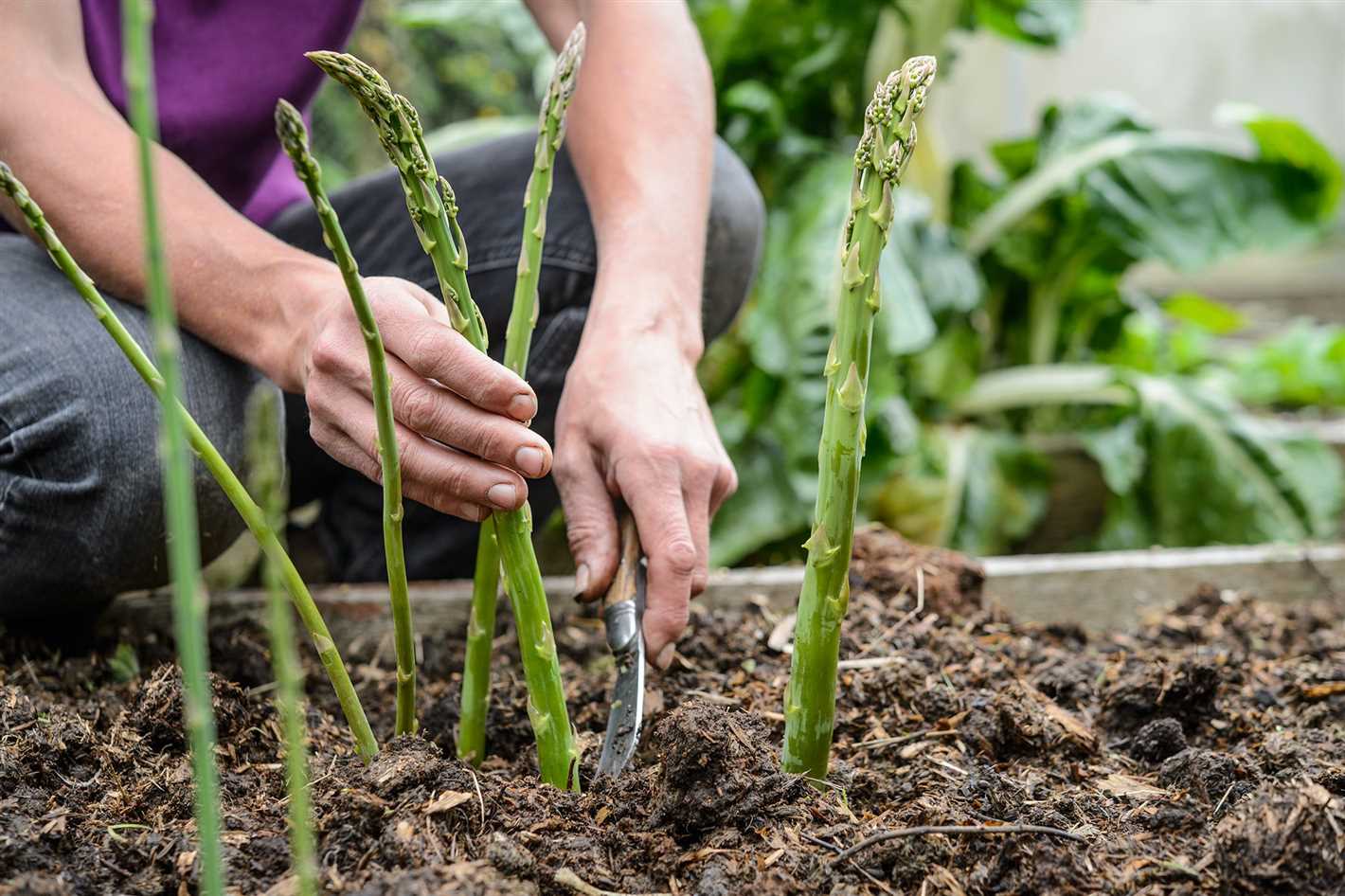
- Ensure that the seedlings are receiving adequate sunlight. Asparagus plants thrive in full sun, so make sure they are receiving at least 8 hours of direct sunlight per day.
- Provide the seedlings with proper nutrients by fertilizing the soil with a balanced fertilizer. Asparagus plants require a nutrient-rich soil to grow properly.
- Monitor the soil moisture and avoid both overwatering and underwatering. Asparagus plants prefer consistently moist soil, but they do not tolerate waterlogged conditions.
Pest Infestation
- Inspect the plants regularly for signs of pests such as aphids, asparagus beetles, or slugs. If you spot any pests, remove them by hand or use insecticidal soap or organic pest control methods.
- Encourage natural predators of pests, such as ladybugs or beneficial nematodes, to help control the population.
- Consider using floating row covers to protect the plants from pests.
Disease Problems
- Practice good sanitation by removing any dead or diseased foliage. Properly dispose of the affected plant material to prevent the spread of diseases.
- Avoid overcrowding the plants, as this can promote the spread of diseases. Provide enough space between the plants for air circulation.
- Rotate the asparagus crop every few years to minimize the risk of soil-borne diseases.
- If necessary, treat the plants with fungicides or other appropriate disease control methods as recommended by a local agricultural extension service.
By taking proactive measures and troubleshooting common issues, you can increase your chances of successfully growing asparagus from seeds in your vegetable garden. With patience and care, you will be able to enjoy a bountiful harvest of this delicious and nutritious vegetable.
Tips for Growing Asparagus Successfully
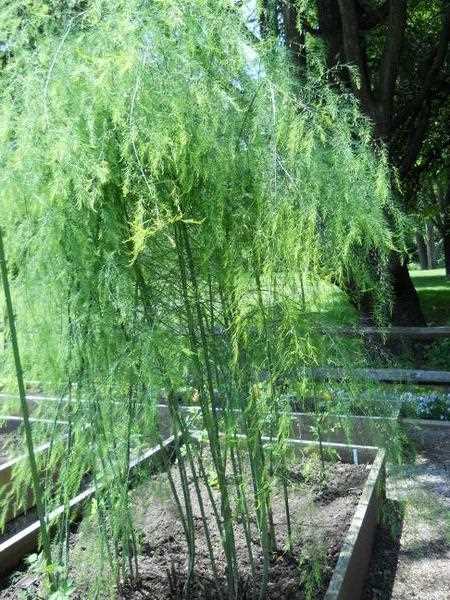
- Choose the Right Variety: Select a variety of asparagus seeds that is suited for your climate and growing conditions. Some common varieties include Mary Washington, Jersey Knight, and Purple Passion.
- Prepare the Soil: Asparagus grows best in well-drained soil that is rich in organic matter. Add compost or well-rotted manure to the soil before planting to improve fertility.
- Sow the Seeds Indoors: Start your asparagus seeds indoors about 8-10 weeks before the last frost date. Use seed trays or pots filled with potting soil and lightly cover the seeds with soil. Keep the soil moist and provide sufficient light for healthy seedling growth.
- Transplant the Seedlings: Once the seedlings are around 8-10 inches tall and the soil temperature has reached around 50°F (10°C), they can be transplanted into the garden. Dig a trench about 6-8 inches deep and place the seedlings with their roots spread out. Backfill the trench with soil, leaving about 2 inches of the seedlings above the soil.
- Provide Adequate Water: Asparagus plants require consistent moisture, especially during the growing season. Water the plants regularly, aiming to keep the soil evenly moist but not waterlogged.
- Control Weeds: Weeds can compete with asparagus plants for nutrients and water. Keep the garden bed free from weeds by regularly hand weeding or using mulch to suppress weed growth.
- Fertilize Regularly: Asparagus plants are heavy feeders, so it is important to fertilize them regularly. Apply a balanced fertilizer or compost in the spring and early summer to provide the necessary nutrients for healthy growth.
- Protect from Pests and Diseases: Asparagus can be susceptible to pests such as asparagus beetles and diseases like asparagus rust. Monitor the plants regularly and take appropriate measures such as handpicking pests or applying organic pest control methods.
- Harvesting and Maintenance: Asparagus can be harvested once the spears reach about 6-8 inches in height. Cut the spears just above the ground using a sharp knife or garden shears. Harvesting should only be done for a few weeks in the first year to allow the plants to establish. After that, you can harvest for about 6-8 weeks each year.
“Question-Answer”
What are some popular varieties of asparagus to grow in a vegetable garden?
Some popular varieties of asparagus to grow in a vegetable garden include Mary Washington, Jersey Knight, and Purple Passion.
Can you grow asparagus from seeds?
Yes, you can grow asparagus from seeds. It is a more economical option than starting from crowns, but it does require more patience.
How long does it take for asparagus seeds to germinate?
Asparagus seeds can take anywhere from 14 to 28 days to germinate, depending on the conditions and the variety.
Do asparagus plants need a lot of space to grow?
Yes, asparagus plants need a lot of space to grow. It is recommended to plant them in a dedicated asparagus bed where they can spread out and not be overcrowded.
What are some tips for growing asparagus from seeds?
Some tips for growing asparagus from seeds include starting them indoors, providing consistent moisture, and transplanting them to a well-prepared bed after the last frost.







